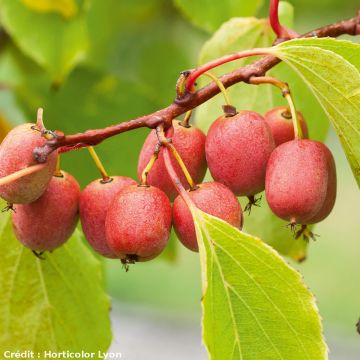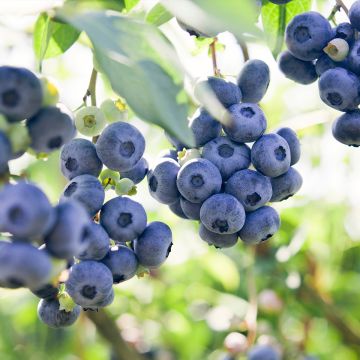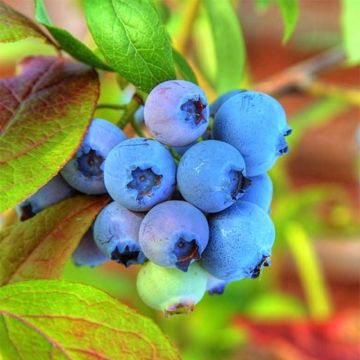

Kiwi Plant kiw'Happy (male) - Actinidia deliciosa


Kiwi Plant kiw'Happy (male) - Actinidia deliciosa
Kiwi Plant kiw'Happy (male) - Actinidia deliciosa
Actinidia deliciosa kiw'Happy mâle
Kiwi, Chinese gooseberry
Special offer!
Receive a €20 voucher for any order over €90 (excluding delivery costs, credit notes, and plastic-free options)!
1- Add your favorite plants to your cart.
2- Once you have reached €90, confirm your order (you can even choose the delivery date!).
3- As soon as your order is shipped, you will receive an email containing your voucher code, valid for 3 months (90 days).
Your voucher is unique and can only be used once, for any order with a minimum value of €20, excluding delivery costs.
Can be combined with other current offers, non-divisible and non-refundable.
Why not try an alternative variety in stock?
View all →This plant carries a 6 months recovery warranty
More information
We guarantee the quality of our plants for a full growing cycle, and will replace at our expense any plant that fails to recover under normal climatic and planting conditions.
Description
The Actinidia deliciosa 'Kiw'Happy' male is a vine-plant of kiwi whose main purpose is to pollinate the female plants of Kiw'Happy. Nevertheless, it also has an ornamental interest due to its exotic appearance, which quickly gives a tropical touch to the garden because of its rapid growth. In spring, its cream-white flowering is quite decorative, and it is especially its large, almost round leaves that catch the eye. It is advisable to train it on a pergola or arbor that it will quickly cover, thus providing beneficial shade in summer. Deciduous, the leaves will fall at the end of the season, allowing the sunlight to pass through. Well-rooted, the plant proves to be hardy down to about -15°C.
The Actinidia deliciosa, formerly known as Actinidia chinensis, is one of the three genera of the small Actinidiaceae family from which it gets its name. The Actinidia comes in several dozen species, mostly dioecious vines, meaning that the female and male flowers are borne on separate plants, requiring their common presence to produce fruit (unlike monoecious plants bearing female and male flowers on the same plant allowing cross fertilization). Kiwis are best known, a term that refers to both the plant and its fruit, but there are also ornamental species, such as Actinidia kolomikta whose leaf tips turn pink and white. Originating from central China (Hubei province), hence its former name Actinidia chinensis, this vigorous climber can reach a height of 8 m, and its long stems can grow to the diameter of a finger in a single season. It bears orbicular to ovate leaves, 8 to 20 cm long by 6 to 15 cm wide. The fragrant cream-white flowers appear in spring, measuring 3 to 4 cm in diameter, with the male flowers slightly smaller than the female ones. They appear on short shoots, which develop on the previous year's branches. The female plants then bear brownish-red fruits covered in hairs, well-known since New Zealand nurserymen started trading them, naming them after their favorite bird.
Kiw'Happy is a kiwi selection with yellow-fleshed fruits, rather than green like the botanical species. Slightly less vigorous than the latter, this climber will easily reach a height of 4 to 5 m, even more, with a width of 3 to 4 m. It bears large, round to oval, dark green leaves on the upper side and lighter underneath. Its growth is very rapid if adequately watered, and it absolutely needs a (sturdy) support to grow on, which it will quickly colonize. Between April and June, depending on the year and region, small cream-white flowers approximately 3 cm in diameter, with 5 or 6 petals, slightly scented and melliferous, bloom. The stamens are pollen-rich, allowing them to fertilize the flowers of a nearby female plant (2 to 3 m away). Your male kiwi, however, will not bear fruit, but can pollinate 5 to 6 female plants. In late autumn, the foliage will fall to the ground, representing a significant volume due to the size of the leaves and the rapid growth of the plant.
The Actinidia deliciosa 'Kiw'Happy' male will be perfect for shading a pergola under which you can enjoy the summer without suffering from high temperatures. Its almost tropical appearance allows for an interesting scene in the garden, especially if you combine it with other distinctive plants, such as the Passiflora caerulea 'Purple Haze', a purple variation of the blue Passion Flower. Less known but equally astonishing, the Campsis capreolata is a climber with bi-coloured yellow and dark red flowers that emit a strong scent of chocolate mixed with coffee!
Report an error about the product description
Kiwi Plant kiw'Happy (male) - Actinidia deliciosa in pictures


Plant habit
Flowering
Foliage
Botanical data
Actinidia
deliciosa
kiw'Happy mâle
Actinidiaceae
Kiwi, Chinese gooseberry
Cultivar or hybrid
Other Kiwi bush
View all →Planting and care
Planting is preferably done in autumn, but can be done all year round outside frost periods. The Kiwi thrives in a fresh, rich, light and well-drained, non-calcareous soil. The plant dreads stagnant moisture. Install it in a sunny position sheltered from strong winds.
Space the male and female plants 2 to 3 m apart. Dig a hole 50 cm in all directions. Spread a layer of gravel at the bottom and then a layer of soil mixed with turf or compost. Place the root ball (the collar of the plant should be at ground level) and backfill with soil. Provide it with a sturdy support to help its voluble branches climb. Firm the soil by watering generously. The Kiwi has running roots, which develop horizontally below the soil surface, implying if necessary a light surface hoeing only. Mulch the plants for the first three winters as the young plant is somewhat sensitive to cold.
The Kiwi requires little maintenance, simply provide regular watering. During periods of high heat, water it 1 to 2 times a week. Once established and rooted, the plant will manage on its own and will be less water-demanding. At the end of winter, bury by lightly hoeing, an organic fertilizer or well-rotted manure at the base of the plant. Train the stems as they grow by tying them to the support without tightening too much. They will twine around the support.
Not very sensitive to insects and pests, the Kiwi can however fall victim to red spiders in a warm and dry environment. To eliminate them, lightly but regularly mist the foliage and the soil.
Planting period
Intended location
Care
This item has not been reviewed yet - be the first to leave a review about it.
Similar products
Haven't found what you were looking for?
Hardiness is the lowest winter temperature a plant can endure without suffering serious damage or even dying. However, hardiness is affected by location (a sheltered area, such as a patio), protection (winter cover) and soil type (hardiness is improved by well-drained soil).

Photo Sharing Terms & Conditions
In order to encourage gardeners to interact and share their experiences, Promesse de fleurs offers various media enabling content to be uploaded onto its Site - in particular via the ‘Photo sharing’ module.
The User agrees to refrain from:
- Posting any content that is illegal, prejudicial, insulting, racist, inciteful to hatred, revisionist, contrary to public decency, that infringes on privacy or on the privacy rights of third parties, in particular the publicity rights of persons and goods, intellectual property rights, or the right to privacy.
- Submitting content on behalf of a third party;
- Impersonate the identity of a third party and/or publish any personal information about a third party;
In general, the User undertakes to refrain from any unethical behaviour.
All Content (in particular text, comments, files, images, photos, videos, creative works, etc.), which may be subject to property or intellectual property rights, image or other private rights, shall remain the property of the User, subject to the limited rights granted by the terms of the licence granted by Promesse de fleurs as stated below. Users are at liberty to publish or not to publish such Content on the Site, notably via the ‘Photo Sharing’ facility, and accept that this Content shall be made public and freely accessible, notably on the Internet.
Users further acknowledge, undertake to have ,and guarantee that they hold all necessary rights and permissions to publish such material on the Site, in particular with regard to the legislation in force pertaining to any privacy, property, intellectual property, image, or contractual rights, or rights of any other nature. By publishing such Content on the Site, Users acknowledge accepting full liability as publishers of the Content within the meaning of the law, and grant Promesse de fleurs, free of charge, an inclusive, worldwide licence for the said Content for the entire duration of its publication, including all reproduction, representation, up/downloading, displaying, performing, transmission, and storage rights.
Users also grant permission for their name to be linked to the Content and accept that this link may not always be made available.
By engaging in posting material, Users consent to their Content becoming automatically accessible on the Internet, in particular on other sites and/or blogs and/or web pages of the Promesse de fleurs site, including in particular social pages and the Promesse de fleurs catalogue.
Users may secure the removal of entrusted content free of charge by issuing a simple request via our contact form.
The flowering period indicated on our website applies to countries and regions located in USDA zone 8 (France, the United Kingdom, Ireland, the Netherlands, etc.)
It will vary according to where you live:
- In zones 9 to 10 (Italy, Spain, Greece, etc.), flowering will occur about 2 to 4 weeks earlier.
- In zones 6 to 7 (Germany, Poland, Slovenia, and lower mountainous regions), flowering will be delayed by 2 to 3 weeks.
- In zone 5 (Central Europe, Scandinavia), blooming will be delayed by 3 to 5 weeks.
In temperate climates, pruning of spring-flowering shrubs (forsythia, spireas, etc.) should be done just after flowering.
Pruning of summer-flowering shrubs (Indian Lilac, Perovskia, etc.) can be done in winter or spring.
In cold regions as well as with frost-sensitive plants, avoid pruning too early when severe frosts may still occur.
The planting period indicated on our website applies to countries and regions located in USDA zone 8 (France, United Kingdom, Ireland, Netherlands).
It will vary according to where you live:
- In Mediterranean zones (Marseille, Madrid, Milan, etc.), autumn and winter are the best planting periods.
- In continental zones (Strasbourg, Munich, Vienna, etc.), delay planting by 2 to 3 weeks in spring and bring it forward by 2 to 4 weeks in autumn.
- In mountainous regions (the Alps, Pyrenees, Carpathians, etc.), it is best to plant in late spring (May-June) or late summer (August-September).
The harvesting period indicated on our website applies to countries and regions in USDA zone 8 (France, England, Ireland, the Netherlands).
In colder areas (Scandinavia, Poland, Austria...) fruit and vegetable harvests are likely to be delayed by 3-4 weeks.
In warmer areas (Italy, Spain, Greece, etc.), harvesting will probably take place earlier, depending on weather conditions.
The sowing periods indicated on our website apply to countries and regions within USDA Zone 8 (France, UK, Ireland, Netherlands).
In colder areas (Scandinavia, Poland, Austria...), delay any outdoor sowing by 3-4 weeks, or sow under glass.
In warmer climes (Italy, Spain, Greece, etc.), bring outdoor sowing forward by a few weeks.
























































